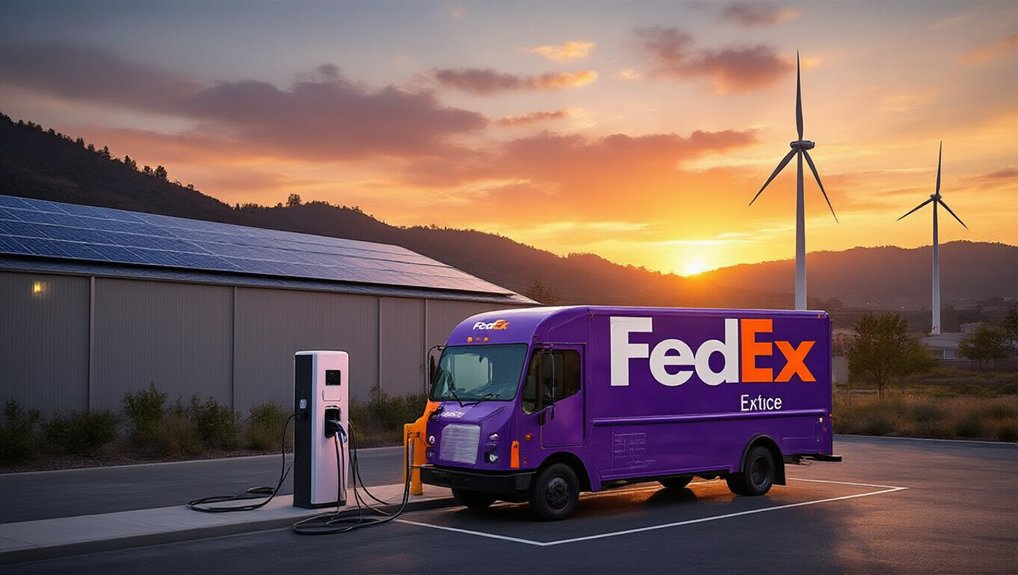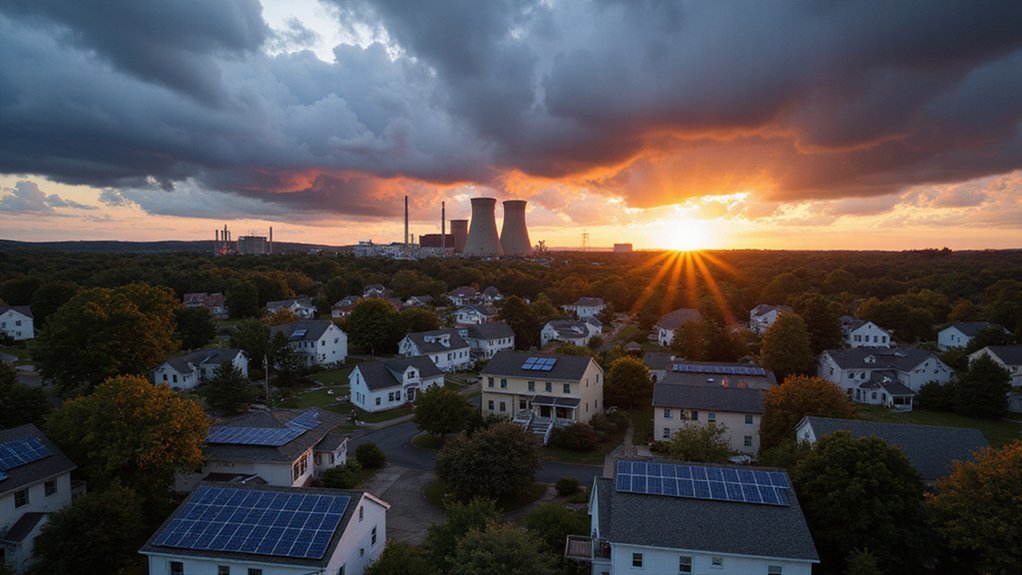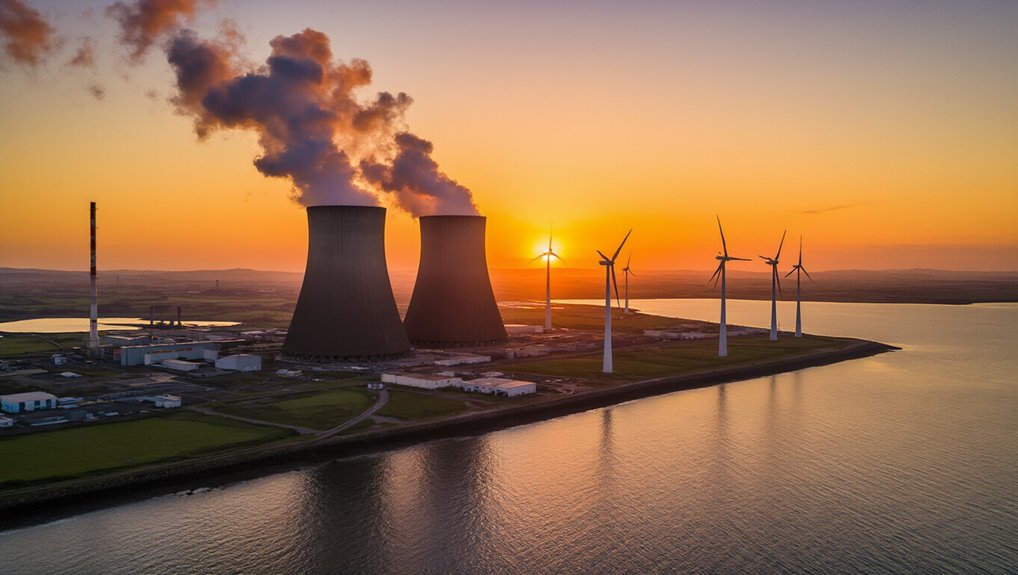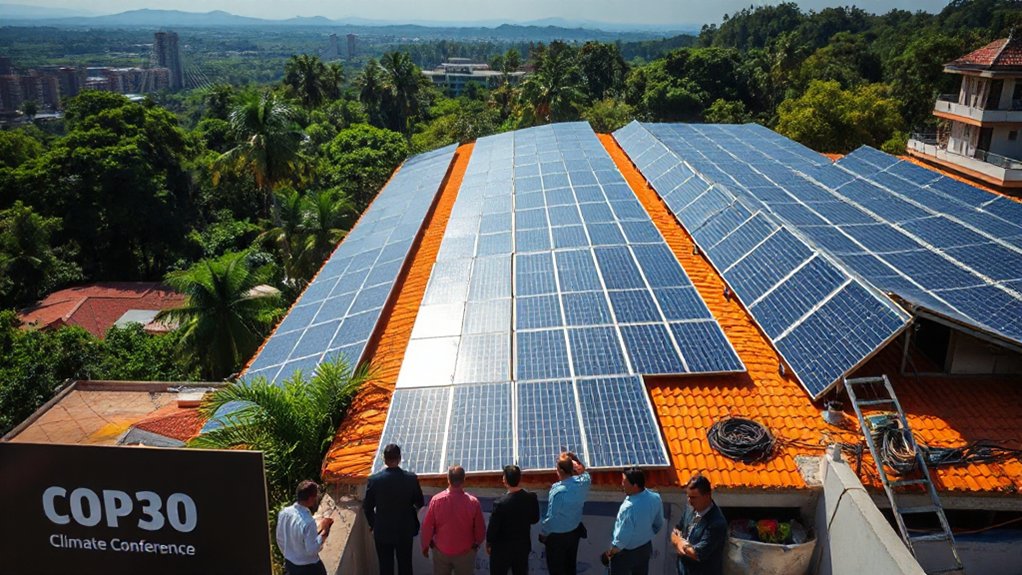Virginia’s solar boom faces a potential roadblock. With 6,839 megawatts of capacity—enough to power 800,000 homes—the state ranks 8th nationally. But Governor Youngkin might roll back small-scale solar requirements that helped create 57,524 jobs and $8.2 billion in investments. Rooftop installations could meet 20% of electricity needs, yet 33 counties have tried blocking solar projects. The battle between rural concerns and clean energy goals just got complicated.
Dozens of counties tried to stop it. Virginia’s solar revolution marched on anyway. The Commonwealth now boasts 6,839 megawatts of solar capacity, enough to power over 800,000 homes and rank 8th nationally. Not bad for a state that barely registered on the solar map a decade ago.
Governor Youngkin now holds the keys to Virginia’s clean energy future. Since the Virginia Clean Economy Act passed in 2020, the state has witnessed explosive growth—42% over ten years. The mandate for 100% clean energy by 2050 created jobs, lots of them. We’re talking 57,524 solar jobs and $8.2 billion invested. Money talks.
Clean energy mandate created 57,524 solar jobs and pumped $8.2 billion into Virginia’s economy. Money talks.
But not everyone’s thrilled. Thirty-three counties threw up legal roadblocks to utility-scale solar. Rural areas slapped moratoriums on new applications. They’re nervous, understandably. Change is scary.
Small-scale solar offers a different path. Rooftop installations could potentially provide 20% of Virginia’s electricity needs. The recently passed CARE package aims to enable more local projects. Environmental concerns persist as nearly 50% of installations replace former forest land. Virginia’s solar generation skyrocketed from a mere 22 GWh in 2014 to an impressive 6,072 GWh in 2023. Virtual power plants. Clean energy apprenticeships. Solar at public schools. The works.
For homeowners, the math is simple. Average cost: $3.67 per watt. A typical 5kW system runs about $12,740 after the federal tax credit. Payback period? Seven years. After that, it’s all gravy—$22,671 in average savings over two decades. Ka-ching.
The state projects adding another 6,715 megawatts over the next five years, ranking Virginia 10th nationally for growth. That’s assuming politicians don’t mess it up. They have a talent for that.
The battle isn’t just about electrons and panels. It’s about Virginia’s identity. A state historically dependent on coal now generates nearly 8% of its electricity from sunshine. Homeowners installing solar panels are not only cutting electricity bills by 20-30% on average but also increasing their property values. The change hasn’t been perfect. Counties lack resources to vet utility-scale proposals. Standardized procedures are missing.
But the revolution? It’s happening, with or without the governor’s blessing. Sometimes the future doesn’t wait for permission.









